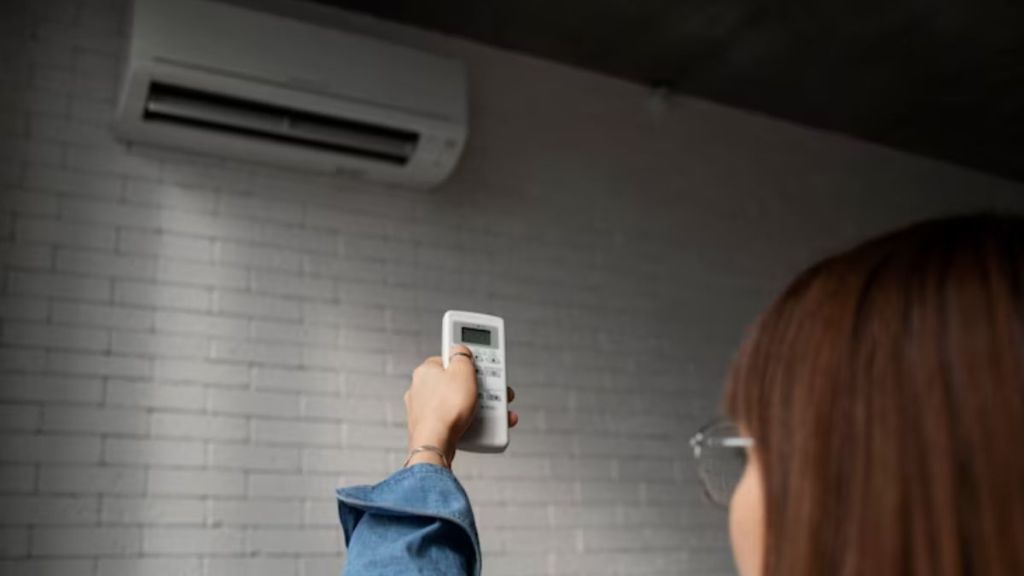By Himanshu Dixit & Disha Agarwal, Respectively programme associate and senior programme lead, Council on Energy, Environment and Water (CEEW)
India is facing a summer of extremes. Delhi is sweltering in heat and humidity with temperatures regularly crossing 40°C even as it grapples with occasional thunderstorms. Keeping the erratic nature of this summer aside, a recent analysis by the Council on Energy, Environment and Water (CEEW) found that 57% of Indian districts, home to over three-fourths of the population, now face high to very high heat risk. The occurrences of very warm nights are rising faster than hot days, and humidity is up 10% in parts of north India. This mix is driving a rapid surge in the demand for cooling — from air-conditioners (ACs) to coolers and fans. This has serious implications for power demand, grid stability, and building climate resilience.
In a move to curb air-conditioning driven electricity consumption, the government wants to increase the minimum set-point limit to 20°C (from 16°C) for residential and commercial establishments. The mandate is targeted to shape consumer behaviour to responsibly achieve thermal comfort and avoid overcooling of spaces while reducing energy bills. Why is this important? In 2023, India sold ~11 million room ACs—a number that jumped by 30% to a record 14 million units in 2024. These were mostly 3-star labelled models, which consume ~30% more energy annually than 5-star units.
The market is projected to grow at a 20% compound annual rate, with annual sales likely to exceed 30 million units by 2030—significantly exceeding the 15% growth projected by the India Cooling Action Plan. If this trend continues, India’s room AC stock will expand nine-fold by 2050. As an alternative for affordable thermal comfort, the cooler market will also grow at ~15% annually. This surge in cooling devices will substantially increase electricity demand, particularly during peak hours. Already, over the past five years, peak demand in major states has outpaced total energy demand growth. By 2035, room AC usage could account for up to 180 GW—nearly a third of India’s projected evening peak demand.
The mandate of higher minimum temperature for air-conditioners is a welcome move to manage power loads, which can be further bolstered through a coordinated, consumer-focused response that combines energy-efficiency measures with clean power and thermally comfortable designs. Four immediate strategies stand out.
First, we must double-down on responsible and energy-efficient AC purchase, use and upgrading. Consumer incentives such as rebates can encourage the uptake of higher star-rated models. Awareness campaigns should promote the total cost of ownership (including operating and maintenance costs) and the benefits of optimal temperature settings (like 24°C), and regular servicing through trained service technicians. Simultaneously, manufacturers must be incentivised to introduce super energy-efficient models. The existing stock of inefficient ACs must also be addressed. A targeted replacement scheme, as proposed by the government, could offer discounts for exchanging older units. However, safeguards are needed to ensure that scrapped units aren’t refurbished and resold.
Second, the integration of cutting-edge cooling technologies into India’s built environment needs to be scaled up. Buildings account for ~30% of India’s electricity use, with homes as the largest users. Studies show that buildings could cut operational energy demand by up to 70% by adopting innovative, non-traditional cooling approaches, such as district cooling systems (like Gujarat’s GiFT City), radiant cooling, and high-efficiency retrofitting existing infrastructure (such as UN House, New Delhi). New tech like non-vapour compression systems and Internet of Things-enabled energy management tools offer further gains. Energy conservation building codes must be implemented through targeted incentives and monitoring to scale solutions.
Third, decentralised renewable energy solutions like rooftop solar with energy storage should be promoted to meet rising peak demand affordably. States like Gujarat, Maharashtra and Rajasthan have led in rooftop solar adoption, easing daytime load. But evening and night-time cooling demand surges—when solar dips—continue to strain supply and raise costs. States must reform tariffs and enable business models that promote solar-plus-storage deployments to meet the cooling-led peak demand cost-effectively. Competitive procurement models for large-scale stand-alone storage, already underway in some states, can be adapted for rooftop solar clusters.
Fourth, passive cooling strategies should be brought to the mainstream to minimise reliance on active cooling. Design measures like shading, ventilation, cool roofs, and insulation can significantly lower indoor temperatures and should be embedded at scale in government housing schemes. Increasing the thermal mass of walls—using materials that absorb and slowly release heat—also helps affordably block external heat ingress. The Smart GHAR (Green Homes at an Affordable Rate) III project in Rajkot under Gujarat’s Affordable Housing Mission, is one such example. Depending on local context, passive design can cut energy use by 10-50%, reducing grid stress while ensuring thermal comfort for all.
Managing India’s cooling boom is not optional—it’s essential to protect lives, livelihoods, health, and energy security. It is also a frontline response to climate change. Rising temperatures and humidity are already reshaping how and where we use energy. How we scale cooling today will determine whether we merely survive the heat or thrive regardless of it.
Views are personal

